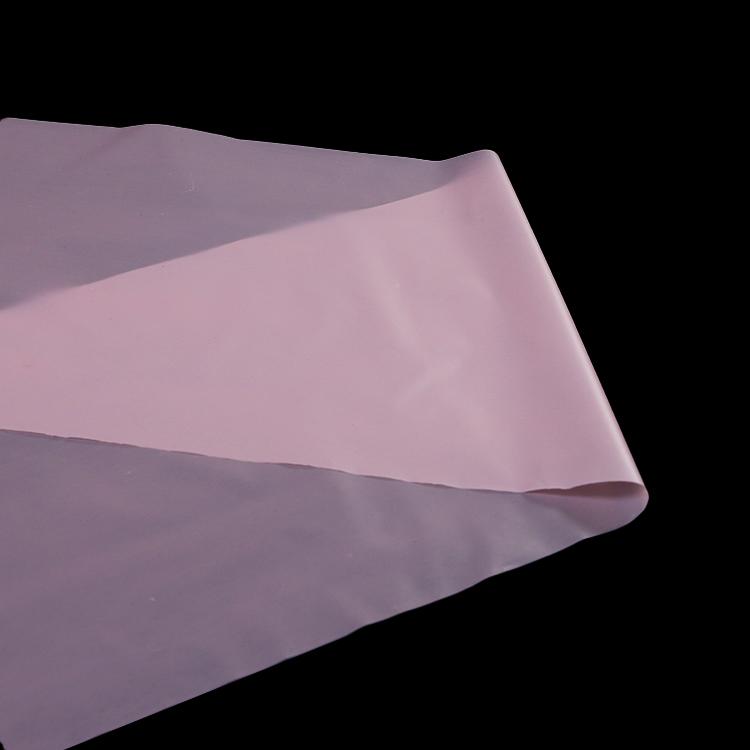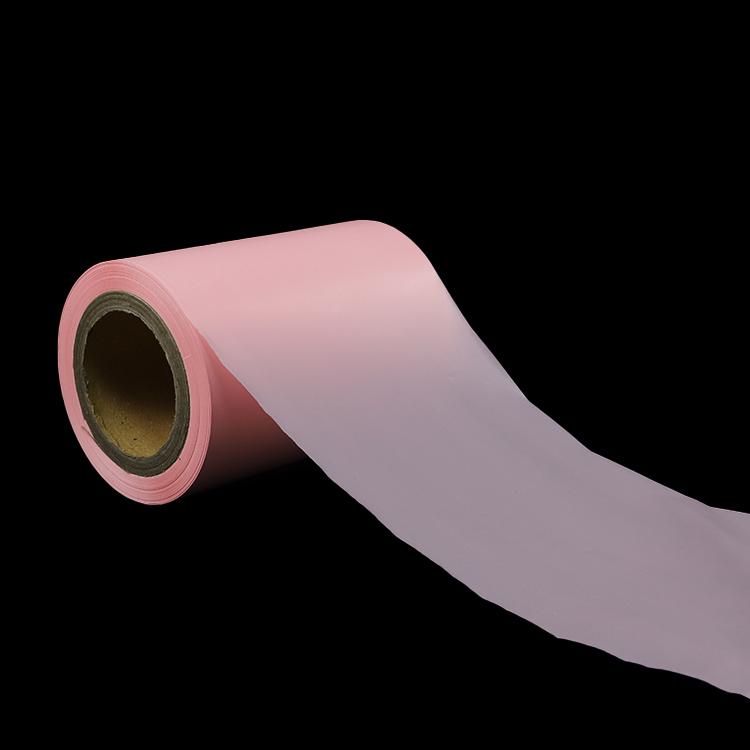Author:Baby & Adult Diaper Materials FROM:Diaper Materials Manufacturer TIME:2023-03-15
During the compounding process of polyethylene film, there will be a series of problems such as poor compounding, white spots, and difficulty in heat sealing. This article explains the reasons for the problem of weak compounding, and proposes relative countermeasures.
Weak compounding means that the composite strength is very low or zero, which cannot meet the requirements of customers at all, resulting in product scrapping. Due to the particularity of the polyethylene film production process, low surface tension, high slip agent content, surface contamination, etc. may lead to poor lamination.
In general, the surface tension of polyethylene film for dry lamination must be above 38dyn/cm before it can be used.
The surface tension value of polyethylene film is very large when it is just produced, but its surface tension value gradually decreases with the passage of storage time. Generally, polyethylene film can be stored for 3-6 months, but in summer, it is hot and humid. The seasonal storage period is best not to exceed 2 months. Practice has proved that the surface tension value of polyethylene film is closely related to the surrounding environment and the thickness of the film. The higher the ambient temperature and humidity, the faster the surface tension value will drop, and the thicker the film, the faster the drop. Therefore, the polyethylene film should not be placed for more than 3 months, especially during the rainy season, more attention should be paid to the ventilation and ventilation of the storage. If it has been left for too long for some reason, when it is reused, in addition to the roll-by-roll inspection, it is also necessary to consider whether to continue to use it according to the use of the composite product, so as to avoid losses.

When PE is polymerized or polyethylene film is formed into a film, it is generally necessary to add a certain amount of additives, such as antistatic agents, slip agents, anti-blocking agents, etc., according to different uses. These additives are not static after film formation or compounding, especially slip agents. Slip agents generally use erucamide or oleic acid amide. There are two reasons for the decrease in composite strength due to slip agents:
①The polyethylene film is placed for a short time, and the slip agent migrates to the surface of the polyethylene film to form a thin dense layer. In contact with PE molecules, the composite initial adhesion is very low. With the increase of curing time, the composite strength does not change much, and the composite strength always remains low or zero. This phenomenon can generally be avoided if you carefully understand the resin conditions used to produce polyethylene films. For special requirements, high-slip polyethylene film must be used. Generally, it should not be placed for too long. If the polyethylene film is used for an extended period of time for some reason, it is best to do a small test or put the polyethylene film in place before compounding. At a temperature of 60-70°C for more than 8 hours, the slip agent at this time will be partially ineffective. At this time, the problem of low composite strength will not occur when the composite is removed, but the polyethylene film does not have high slip.
②Composite initial adhesion is acceptable, but as the curing time prolongs, the composite strength becomes lower and lower, and a layer of white powdery substance appears between the two layers. This is due to the selection of high-slip PE raw materials in the production of polyethylene films. Due to the high content of slip agents in the film, the movement of the slip agent molecules in the film is intensified during the high temperature (40-50°C) curing process. , a large number of slip agent molecules migrate to both sides of the film. As time goes on, the amount of migration to the surface gradually increases. The migration destroys the physical bonding process between the adhesive and PE molecules, and the newly formed The weak cohesive force is destroyed, the longer the time, the stronger the destructive force and the lower the composite strength. When encountering this situation, it is generally adopted to increase the curing temperature to accelerate the crosslinking speed of the adhesive, so that the reaction speed exceeds the migration speed of the slip agent, so as to compensate for the excessive slip agent in the polyethylene film. Negative impact.
In the production process, in many cases, various nearly contradictory requirements of customers will be encountered, such as automatic packaging, which requires high composite strength and low friction coefficient, which itself is a pair of contradictions. In order to solve this pair Contradictions, the multi-layer co-extrusion film-making method is generally adopted, and different ingredients are selected for each layer according to different uses to meet various requirements of customers.

Polyethylene film is generally not subject to pollution during the production process, but there is one kind of pollution that is easily overlooked, that is, the pollution of dyne solution. Many manufacturers of polyethylene film use self-prepared dyne solution to test the surface tension of the film. The dyne solution is generally a mixture of ethylene glycol monoethyl ether, which is a colorless transparent liquid. If it pollutes the guide roller accidentally, due to its slow volatilization speed, the film will be polluted when passing the guide roller. , the dyne solution invades the surface of the polyethylene film and binds tightly with the PE molecules. After compounding, it does not cross-link with the adhesive molecules, resulting in zero local composite strength. This situation is extremely difficult to find in the ex ante inspection.


 Email: info@whldiapernonwoven.com
Email: info@whldiapernonwoven.com
 MP/WhatsApp: +86-13599937366
MP/WhatsApp: +86-13599937366
 Manufacturer Address:Room 1105B, Bld M1, Manhattan, Yulongwan, Shimao, Shuanglong Road, Meiling Street, Jinjiang, Fujian, China
Manufacturer Address:Room 1105B, Bld M1, Manhattan, Yulongwan, Shimao, Shuanglong Road, Meiling Street, Jinjiang, Fujian, China